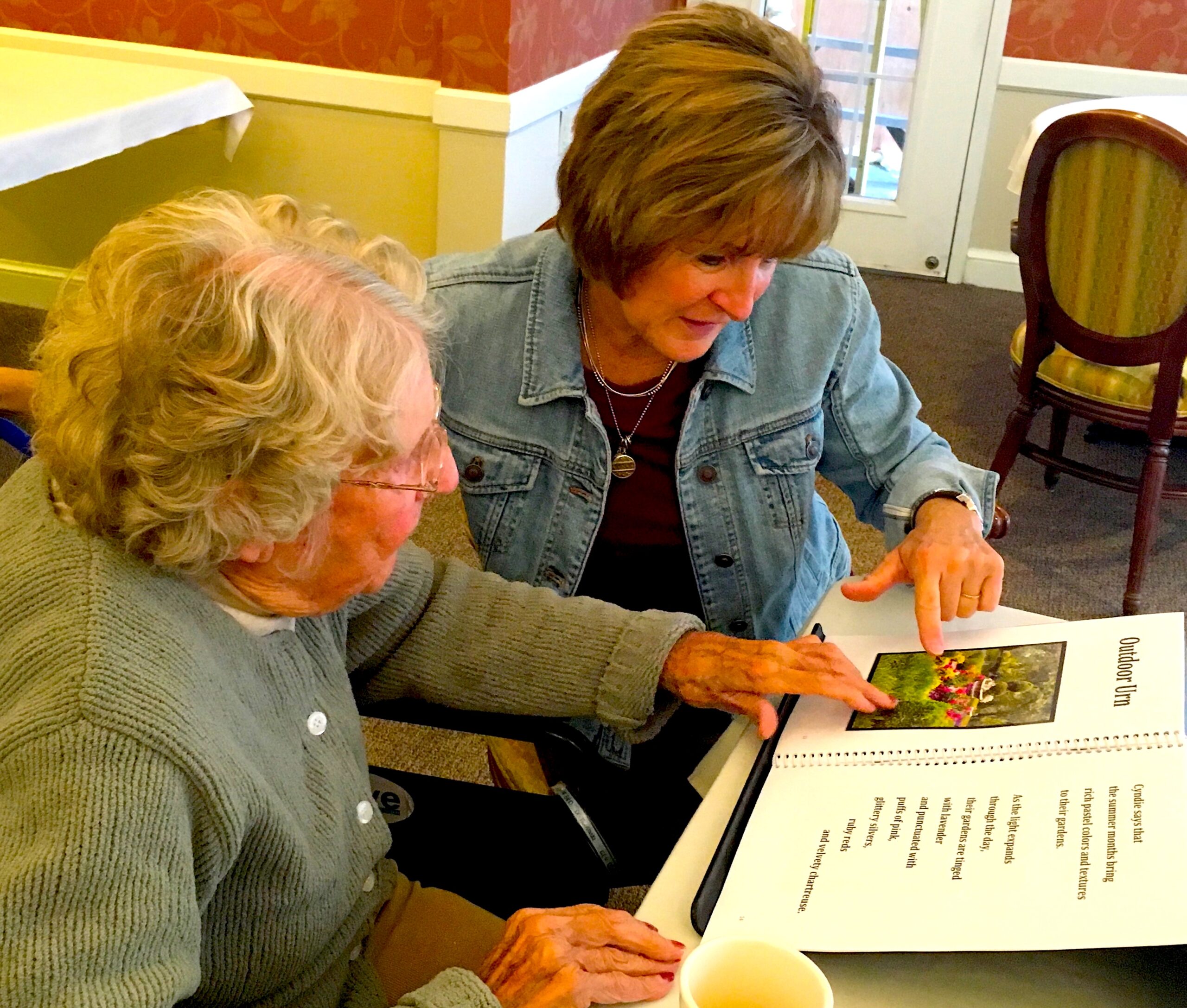As a proud partner of NALTCV, the Validation Training Institute embodies our shared belief in the power of empathy, respect, and authentic connection with older adults. We’re honored to feature their article, “Listening with the Heart,” which tells the powerful story behind the Validation Method, developed by Naomi Feil.
NALTCV encourages long-term care volunteers to deepen their impact by advancing their skills through ongoing training. Validation is one of the specialized approaches we proudly highlight—a method that helps volunteers and care partners truly connect with people experiencing disorientation, dementia, or memory loss with compassion and dignity.
Born from Naomi’s deep personal connection to the elders she grew up alongside, Validation is more than a technique—it’s a philosophy grounded in listening, honoring emotional truths, and meeting people where they are. Through stories, principles, and decades of impact, this piece beautifully illustrates how Validation has transformed care relationships around the world.
We’re grateful for our partnership with VTI and the work they do to elevate dignity and emotional well-being in long-term care communities.
👉 Read the article below and be inspired to connect more deeply—with presence, purpose, and heart.
Listening with the Heart: The Story and Impact of the Validation Method
– by Vicki de Klerk-Rubin, Executive Director
My mother, Naomi Feil, developed the Validation method in the 1960s and 70s. Validation is a method for connecting quickly, on a human-to-human level and communicating with disoriented old people. People she knew quite well.
How Validation developed
As a 4-year-old refugee from Nazi Germany, she grew up in the Montefiore Home for the Aged in Cleveland, Ohio, where her father was the administrator and her mother, the head of Social Services. The residents were her direct neighbors and her friends. This gave her unique insight and empathy into the world of older adults and laid the foundation of her future breakthrough.
After earning her Master’s in Social Work at Columbia University, Naomi returned to the very place where she had been raised—not just in childhood, but in spirit. She began working with the “special services” residents: those who were labeled “crazy,” “senile demented,” or “hopeless.” The prevailing approaches at the time—such as reality orientation—attempted to force these elders back into a shared reality, often with frustrating or even harmful results. Naomi knew, instinctively and from experience, that something essential was being missed.
Key Principles
She started with a few basic principles that became the backbone of the Validation method:
- All very old people are unique and worthwhile.
- Disoriented older adults should be accepted as they are—we should not try to change them.
- There is a reason behind their seemingly “irrational” behavior.
These principles were born not from textbooks, but from deeply human interactions with people like Mrs. Gogolick and Mr. Rose.
Learning from older people
Mrs. Gogolick had once been an executive secretary for a major firm. In the Home, she would dress smartly, don her coat and hat, and sit in the lobby of the home with her handbag on her lap. She carefully filed its contents—tissues, scraps of paper, small items—doing the work that made her feel useful. When Naomi asked her about her job, she proudly responded, “I still go in.”
When asked her age, she deflected with a smile: “Oh, over 30.”
“Could you be 70?” Naomi gently asked.
“I could do the work of 70.”
“You could do the work of 70 people!?”
“Well, not at one time,” she replied with a grin.
Mr Rose was more troubled…
He roamed the halls with a cane, loudly accusing the administrator—Naomi’s father—of having castrated him in the attic. Rather than dismiss his claims or medicate his behavior away, Naomi listened. She took him to the attic to show him there was nothing there. She brought in her father to try to assure Mr. Rose that he meant no harm. But this well-intentioned logic only caused Mr. Rose to retreat into silence.
It was only after his death that Naomi spoke with his sister and learned the truth: as a child, Mr. Rose had been repeatedly punished in the attic. His father told him he was worthless and treated him as such. The attic, and his accusations, were not signs of madness—they were metaphors for lifelong wounds, still unhealed.
Naomi realized something revolutionary: disoriented older adults were not “crazy.” They were using the best tools they had—memory, metaphor, emotion—to make sense of their world and express unmet needs and emotions. Whether it was grief, guilt, shame, or loneliness, these elders were often trying to resolve something essential before they could die in peace.
Out of this understanding, the Validation method was born.
Reach and Impact
In 1982, Validation: The Feil Method was published, compiling Naomi’s observations and the techniques she had refined through years of trial and error. That foundational text has since been updated and revised four times, reflecting both advances in research and the deepening wisdom gained from practice.
Her second book, The Validation Breakthrough, was published in 1989 and has also gone through multiple revisions. It became the go-to resource for caregivers, therapists, and family members struggling to connect with disoriented elders in a respectful and meaningful way.
That same year, Naomi founded the Validation Training Institute (VTI), which has since grown into an international network with 29 Authorized Validation Organizations in 14 countries. Hundreds of trainers and thousands of certified practitioners are now using the method to transform care settings around the world—from long-term care facilities to private homes.
The core of Validation lies in empathy—what Naomi often calls “listening with the heart.” Practitioners learn to enter the world of the disoriented elder, rather than dragging the elder back into theirs. They use specific techniques: matching voice tone and body language, mirroring emotions, and gently asking open-ended questions. These skills build trust, relieve anxiety, and often lead to deep emotional healing.
Unlike methods focused on distraction, correction, or redirection, Validation assumes that every expression—no matter how confusing—is meaningful. If an older woman believes she needs to “go home to take care of the children,” a Validating response might be: “How many children do you have?” This opens a door. The elder feels seen, honored, and may begin to share stories or feelings that have long been buried.
Of course, Validation isn’t magic. But it is a powerful way to preserve dignity, reduce stress, and foster genuine connection. Research and anecdotal reports alike show that it improves mood, decreases agitation, and enriches the quality of life for both elders and caregivers.
Over the decades, the method has continued to evolve. The growing body of neurological and psychological research has only strengthened its foundation. Recent studies in brain plasticity, trauma, and memory have confirmed what Naomi intuitively understood: emotional truths often outlast cognitive facts. And healing is always possible, even late in life.
A Philosophy for Today
Today, as the global population ages and more families face the challenge of what Naomi called, “Oldheimer’s,” Validation’s importance has only grown. In a world eager for quick fixes and clinical solutions, Naomi’s message is more radical than ever: that every person, no matter how confused or frail, deserves to be treated with empathy, respect, and love.
Validation is not just a technique—it is a philosophy, a way of being with people in their most vulnerable moments. It teaches us not just how to communicate, but how to be present. To listen not just with our ears, but with our hearts.
And it all began with a little girl in an old age home, listening carefully to the people the rest of the world had forgotten.




